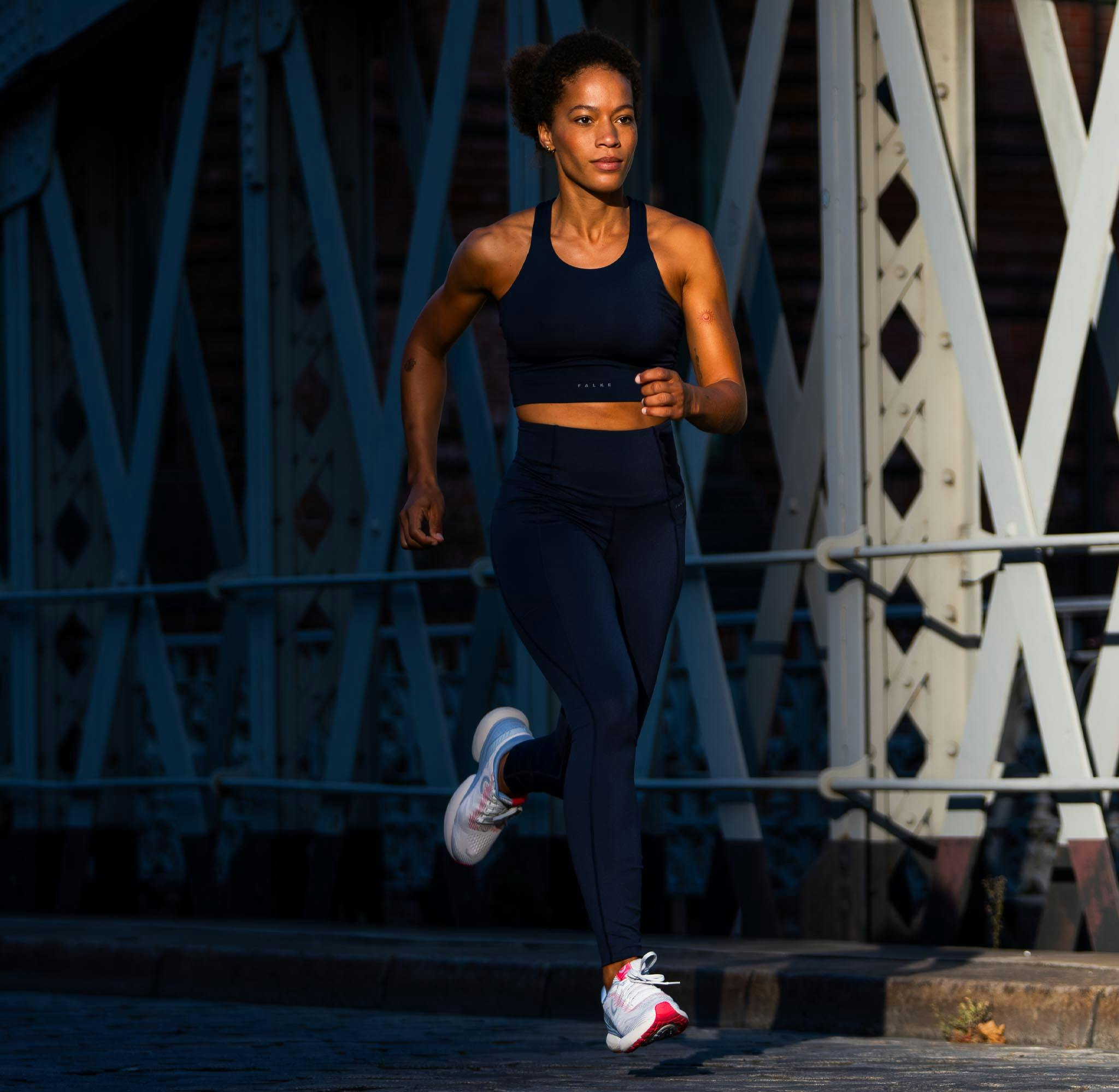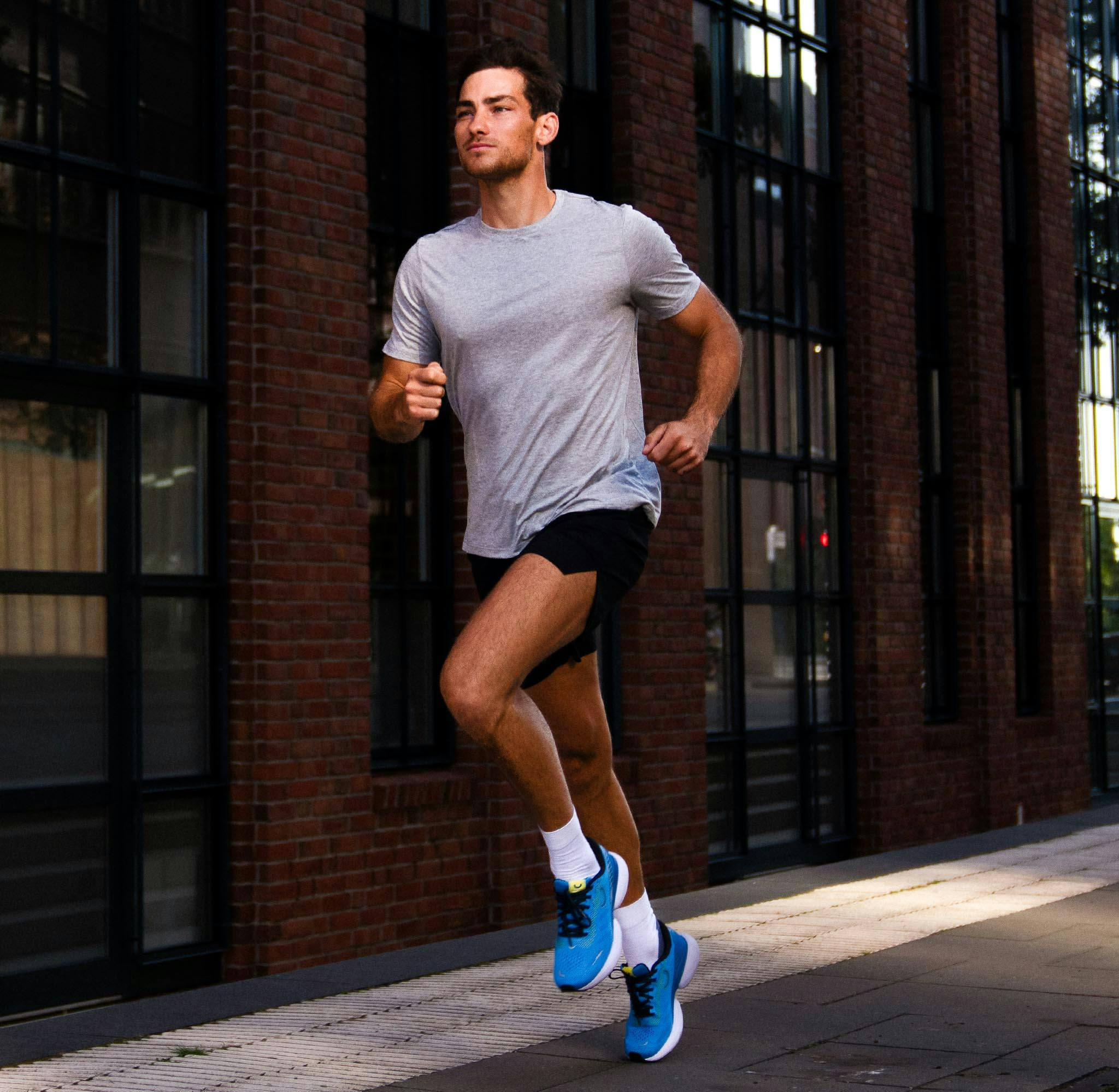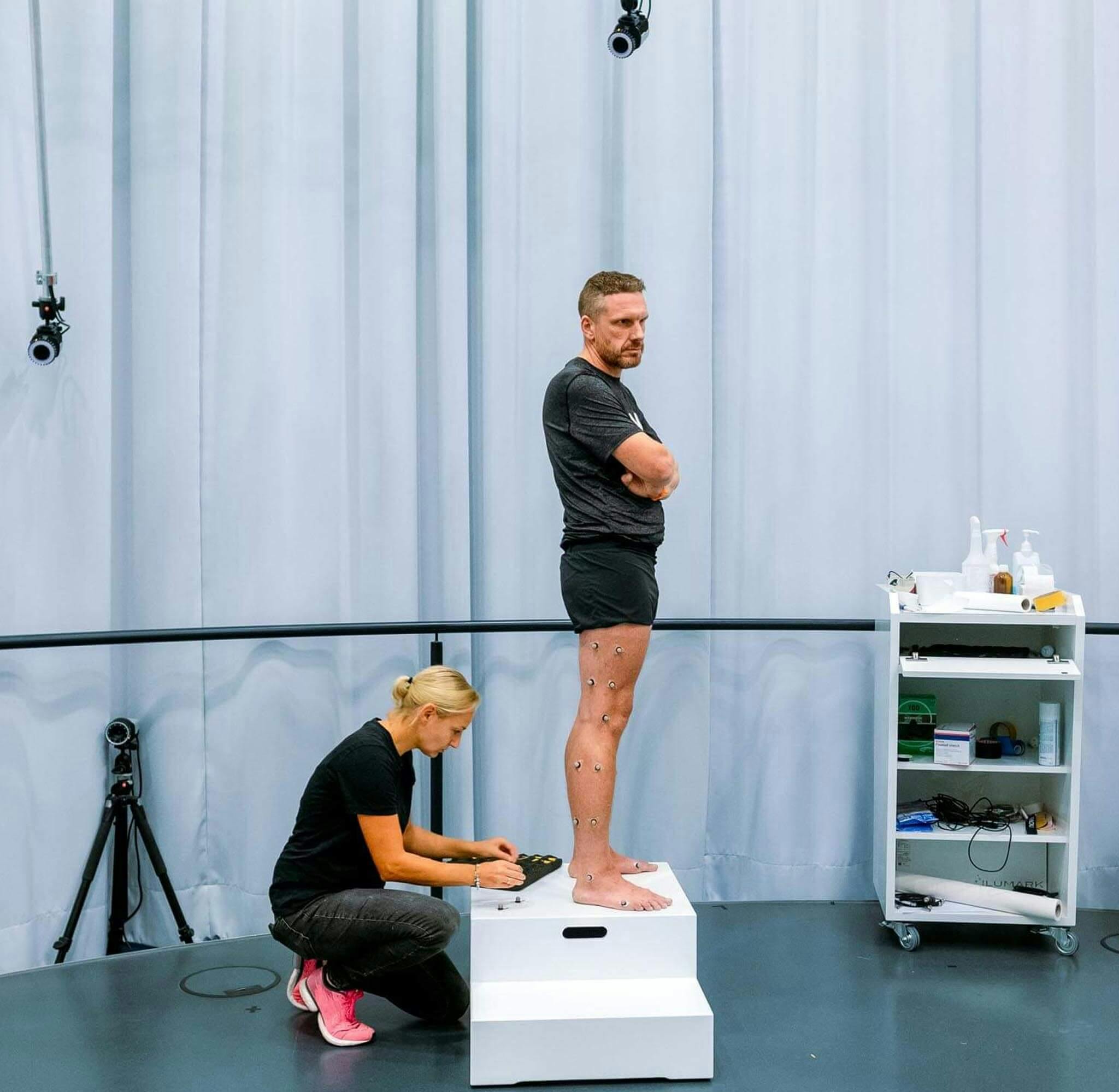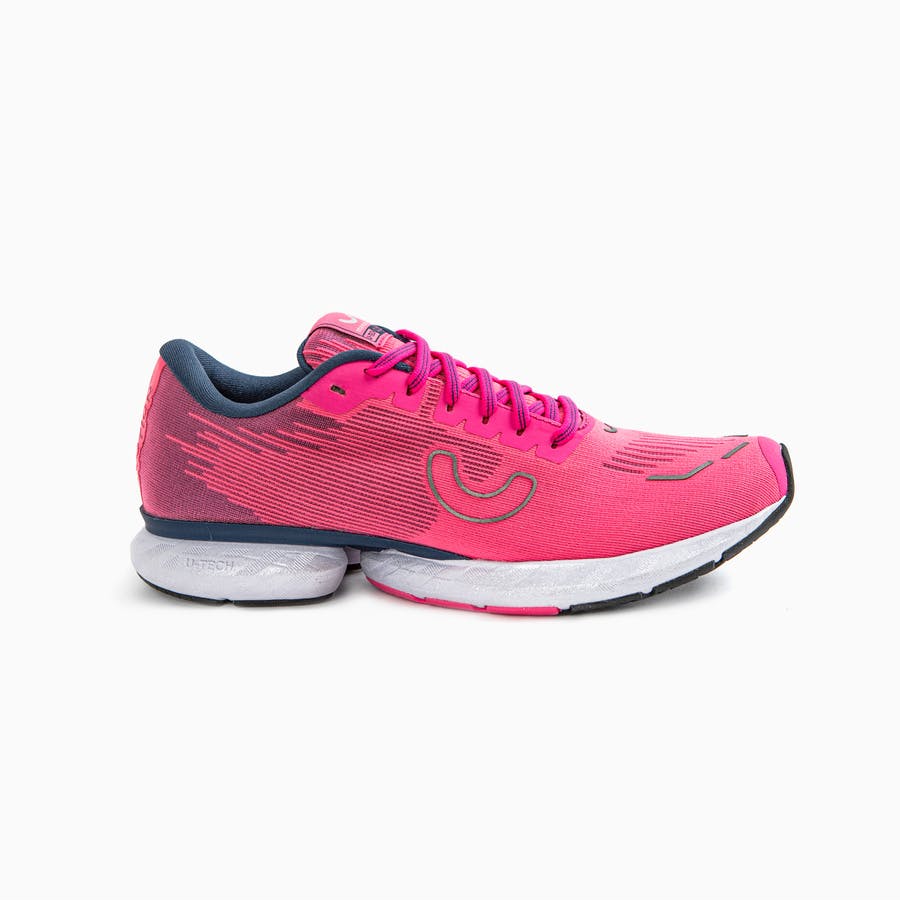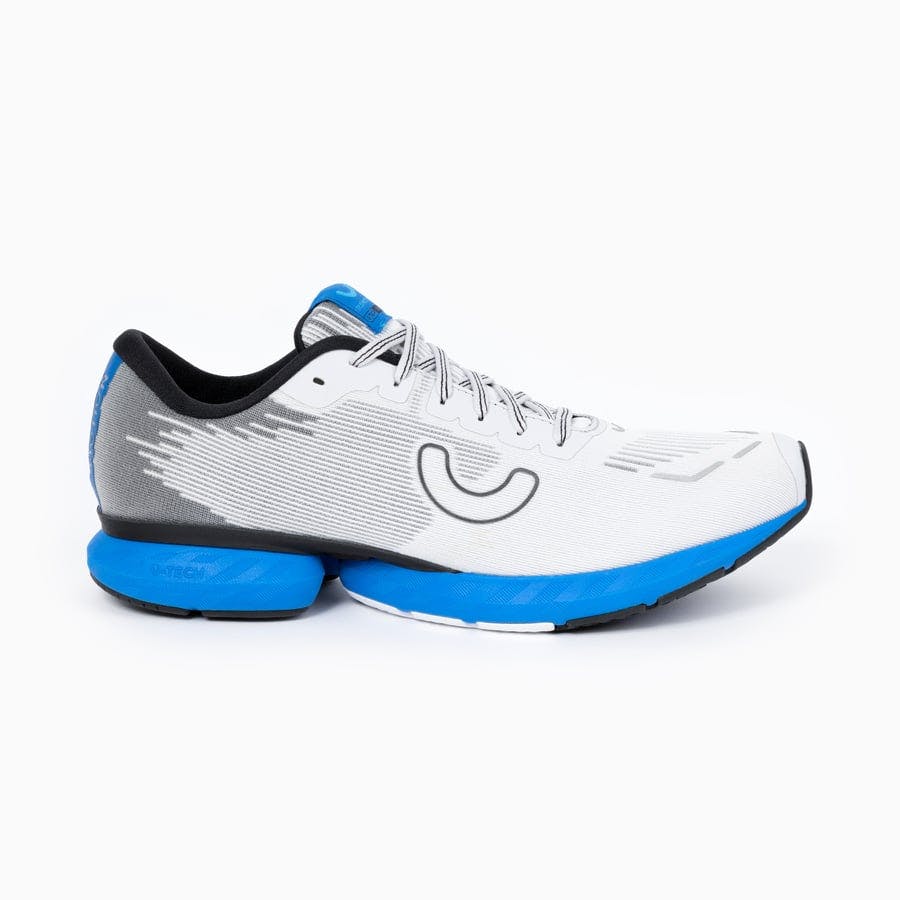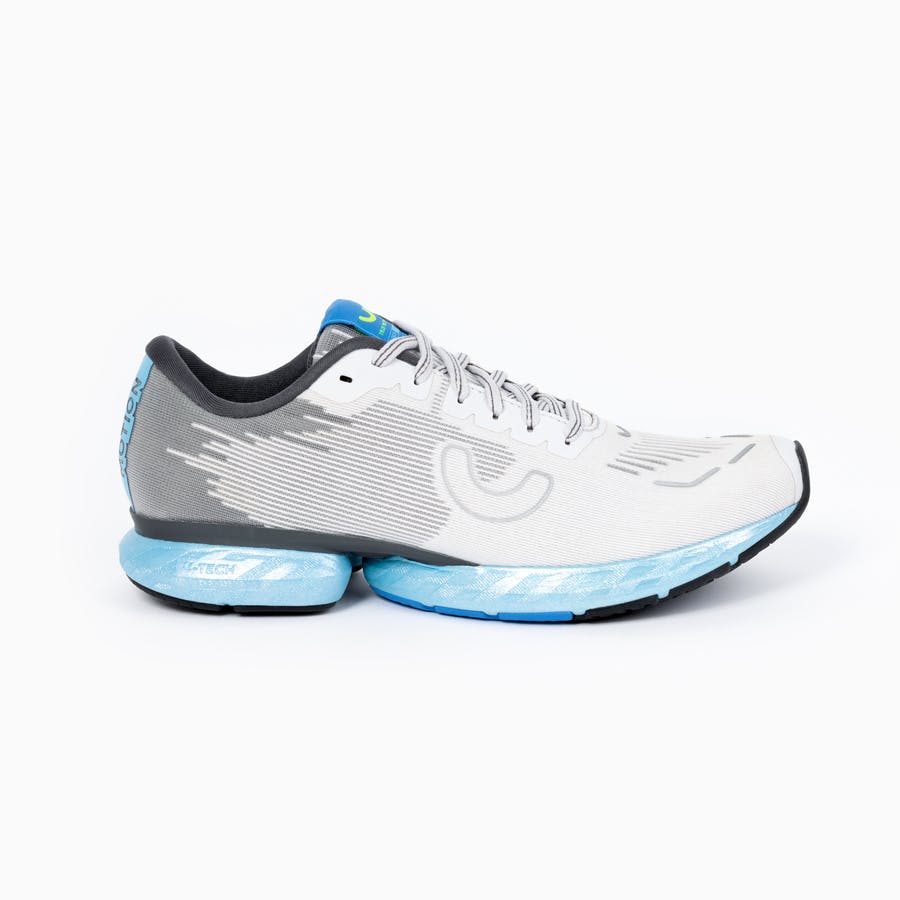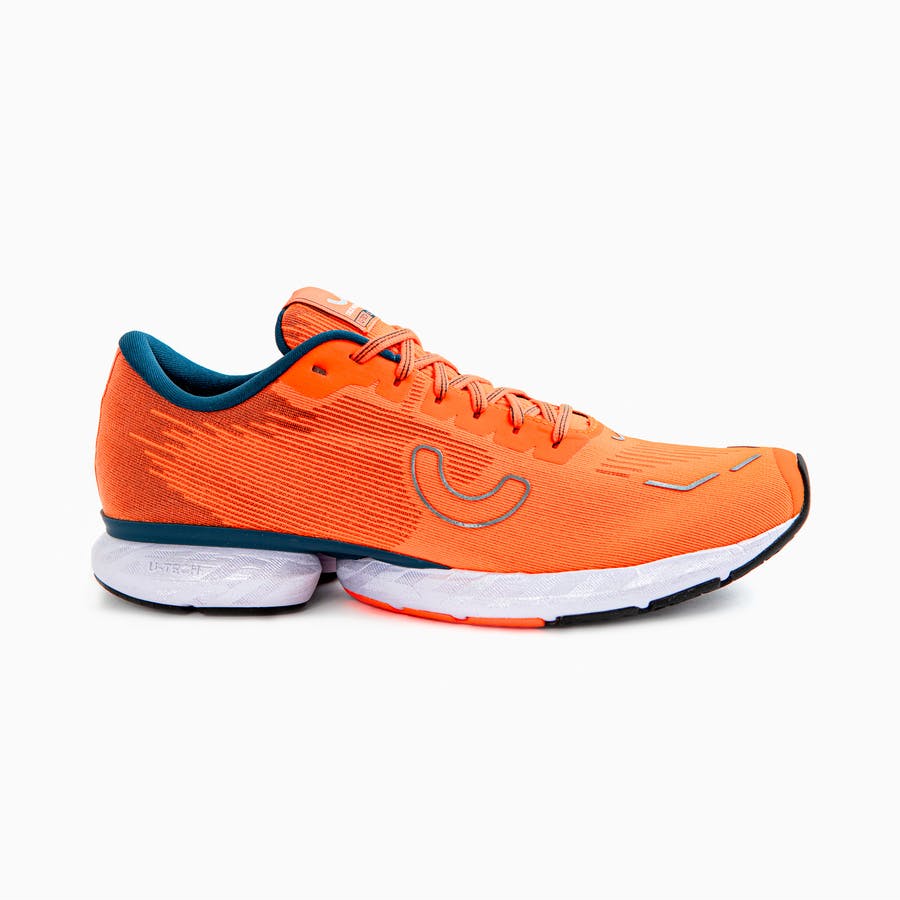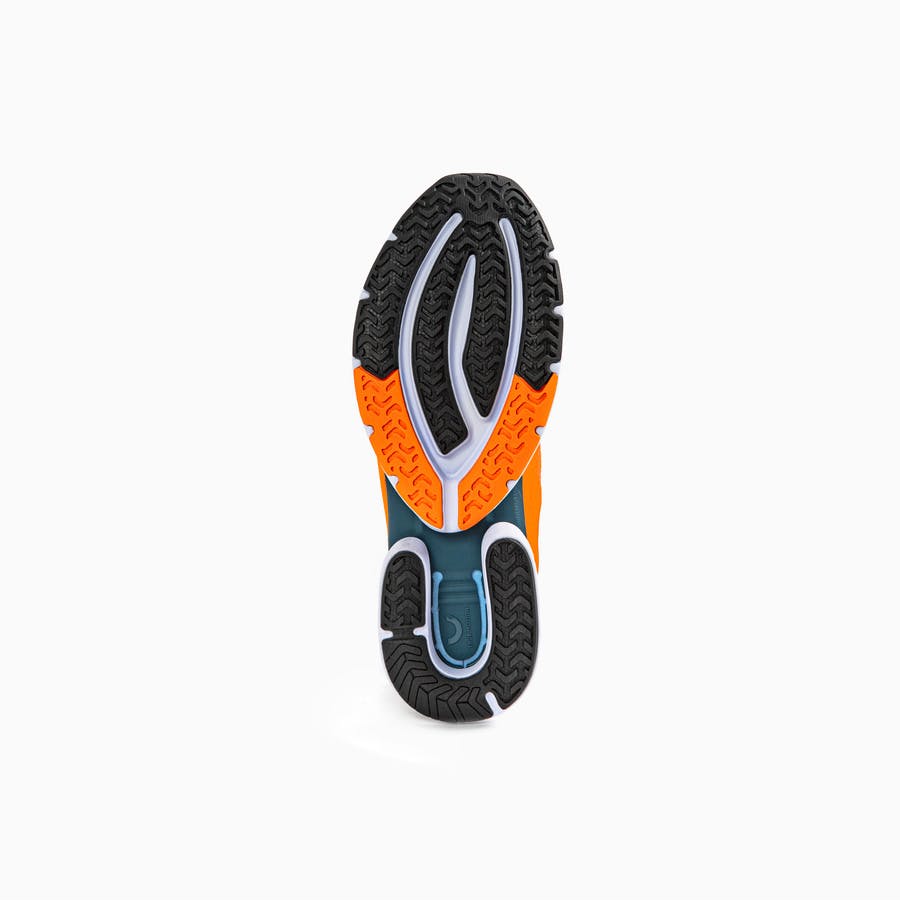
Running Faster – What to Consider When Running at a Faster Pace
10th December 2021
Brigid Kosgei, Eliud Kipchoge, and Usain Bolt have one thing in common: they are the fastest runners in the world. Although their world record times will always remain out of reach for us recreational runners, they inspire us to set new goals. Whether in training or in competition, we too usually want to run faster at some point. How much faster is different for each runner individually. However, if we want to increase our pace, we have to keep certain things in mind. The best tips on how we can train running faster.
Content:
What is fast running anyway?
What we should consider when we want to train running faster
How we properly train running fast
Proper running technique and strength training are important for running fast
Longer, further, faster – as runners, we are constantly looking for new goals when we go for a run. At first, when we lace up our running shoes for the first time, we often motivate ourselves by knowing that exercising is great for our bodies. Running is healthy, keeps us fit, and clears our heads. But at some point, that’s no longer enough. We need new goals. Instead of just jogging, we want to cover longer distances, compete in a race, or simply run faster. At first, this sounds like a lot of work – but with a few tips, we can train ourselves to run faster.
What is fast running anyway?
“Running fast is very individual,” says Eva Hirschhäuser, Tech & Brand Representative at True Motion. While an average time of six minutes per kilometer can already be fast for recreational runners, this is relatively slow for more ambitious runners. While professionals need between three and four minutes per kilometer over longer distances, the world’s top runners run under three minutes per kilometer in perfect conditions.
Thus, finding a definition for fast running is almost impossible. “What we mean by fast running always depends on the personal training status and general physical fitness,” Eva Hirschhäuser summarizes. While the marathon world record for men is at 2:01:39 hours and for women at 2:14:04 hours, a study conducted by the International Association of Athletics Federations (World Athletics, formerly IAAF) and Run Repeat shows that amateur runners run a marathon in about four and a half hours on average. A fast runner runs faster than the average and gives his or her cardiovascular system a stimulus in the process.
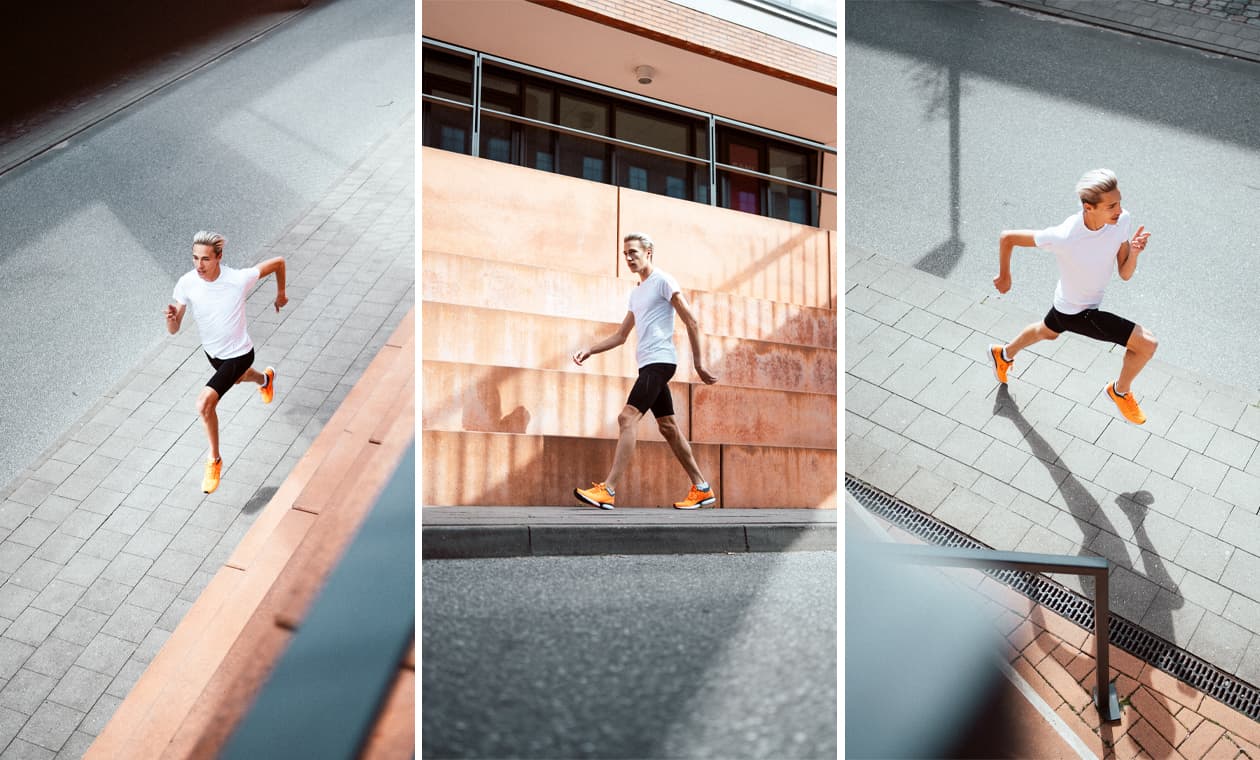
What we should consider when we want to train running faster
Even if fast running is well trainable – without a clear goal in mind, we quickly lose motivation. To increase our average pace, we need discipline. Runners who train for 5,000- or 10,000-meter runs and half marathons or marathons sooner or later work on their pace. Most of the time, this works. That’s because new personal bests often motivate us for the next race.
Although potentially all runners can train running faster, we should keep one thing in mind: if we have orthopedic or clinical pre-existing conditions that affect the cardiovascular system in particular, we should consult our doctor before our first tempo-intensive training sessions. They can make sure that there are no medical reasons speaking against a higher load.
If there are no health concerns, the following applies before the first workout: proper preparation is crucial. Since more intensive units put more strain on our bodies than we are used to, we should warm up well before faster runs. “The warm-up should last at least ten minutes,” says Eva Hirschhäuser. This protects our muscles from injuries. “The biggest mistake is to go straight into full speed.”
For a similar reason, we shouldn’t schedule tempo sessions on days that are too cold. After all, if temperatures drop, so does our muscle performance. As a result, we run less efficiently and the risk of injuring muscles, tendons, and ligaments increases. If on top of that we increase the load on our muscles by running fast, we risk injuries in the lower body, legs, and feet.
Not only our training condition, but also our running equipment influences our pace. Heavy running shoes prevent us from achieving personal bests. The more weight we carry on our feet, the more strenuous the session. As a result, we run slower.
PERFECT FOR ANY PACE BOOST:
DISCOVER THE U-TECH SOLO
RUN NEW PERSONAL BESTS WITH THE U-TECH SOLO
Midfoot, forefoot, or rearfoot strikers – all runners who want to step on the gas have one thing in common: they touch the ground farther at the front of the sole. This is exactly where we placed a new version of our unique U-TECHTM technology, Double U. Inspired by the natural motion, you sink into the twofold U-shaped construction. U-TECHTM surrounds your foot, centers forces, and thus provides you with support and physiological stability.
How we properly train running fast
“To get faster, our body needs stimuli,” says Eva Hirschhäuser. If we always run monotonously in our comfort zone, we don’t increase our average pace. Instead, our body must learn to adapt to new loads. The best way to do this is to know our threshold pace – the area between the aerobic and anaerobic zones. If we train and alternate between these two zones, we can become faster in the long term.
"To become faster, our body needs stimuli"
That’s why we usually train running faster with interval training, tempo runs, and fartleks. “Through this running training, we increase our heart rate,” explains Eva Hirschhäuser. “In addition, we thus stress our muscles differently, which means that fatigue sets in later.” Strength training can support this process further. With strength training, we ensure that we make our muscles resilient to a faster pace.
Setting our threshold pace
Determining our threshold pace is not that difficult. As long as we can still talk easily while running, we are below our personal aerobic-anaerobic threshold. Only when we find it increasingly difficult to talk while running do we approach our threshold. It is reached when we can continue running for about half an hour at what we consider to be a fast pace. To train our pace in a targeted manner, we should run in this threshold zone once or twice a week – but not longer than 30 minutes.
However, we reach our competitive pace when we run above our threshold in the anaerobic zone. If we train in this zone, we increase our so-called tempo resilience. This is necessary to set new personal bests in competitions.
Train your pace with tempo runs
When we run at our threshold between the aerobic and anaerobic zones for a longer period of time, we call it a tempo endurance run. We then train for around 20 to 60 minutes over several kilometers at a constant intensity – and reach around 85 % of our maximum heart rate. As a rule of thumb, tempo endurance running is about as fast as running a marathon. This way, we train not only for running fast – but also for 5,000-meter and 10,000-meter runs, as well as for half marathons and marathons.
Run faster and longer through interval training
Interval training is characterized by alternating loading and unloading during a session. This is achieved by running a certain distance and then taking a short break. During the loading phase, the pulse increases and our muscles fatigue. During the breaks, the pulse goes down again – but the fatigue of the muscles decreases only minimally. This stimulus trains our muscles – and we can run faster and longer.
What exactly interval training looks like depends on individual goals. Especially when we train running faster, the distances are ideally 200 or 400 meters long. We run these five to ten times at about our personal best pace over five kilometers. Between each run, we take a break of about two minutes. If we want to train not only our speed but also our stamina, we can increase the length of the intervals to up to 1,000 meters.
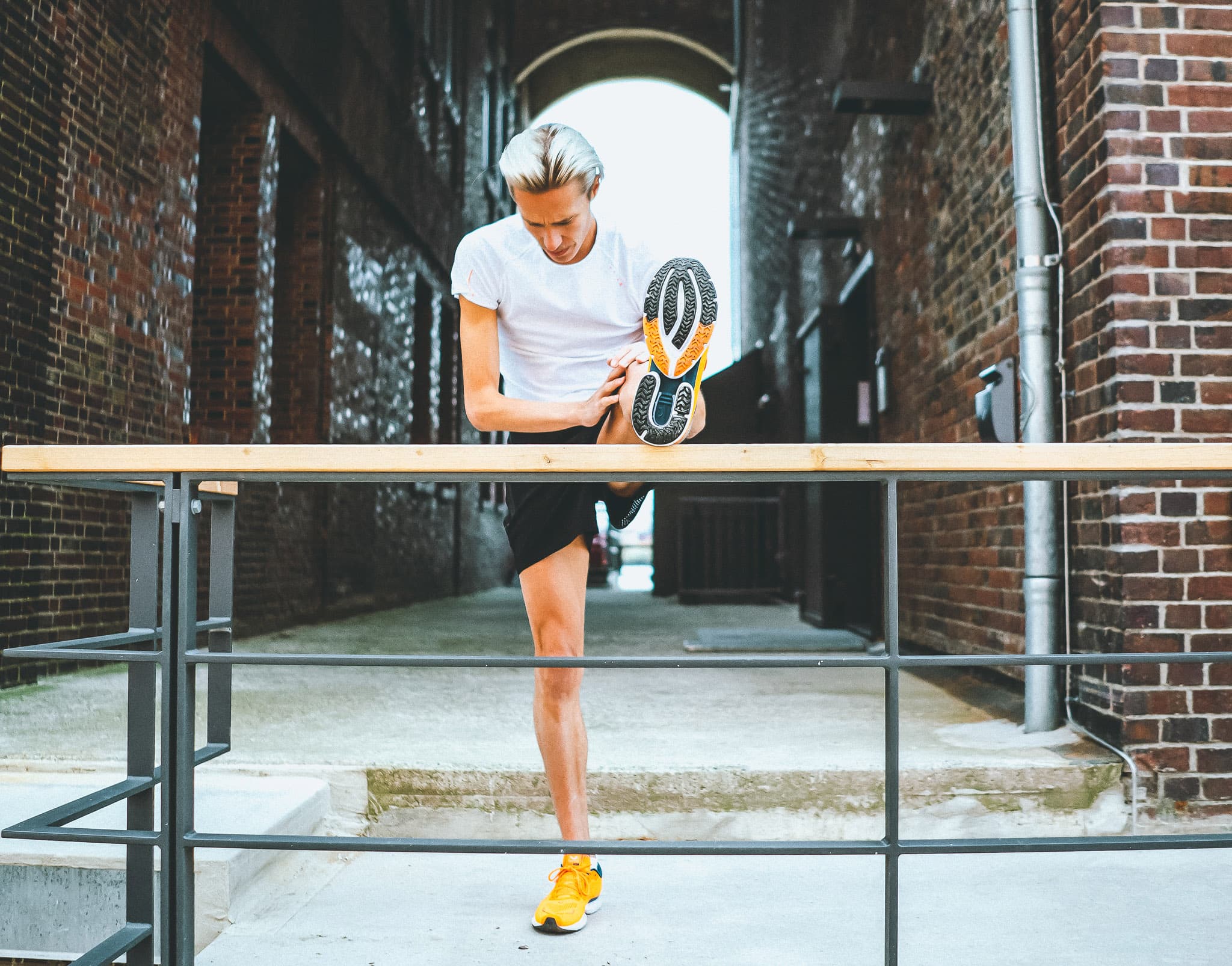
Set a good pace with fartleks
At first glance, the so-called fartlek is similar to the interval training. Here too, we can set distances – or alternatively time intervals. However, while we take real breaks after short, crisp running sessions in interval training, in the fartlek we keep moving. The advantage is that we don’t cool down as quickly, we let our muscles continue to work – and train running faster that way.
We can deliberately integrate the fartlek as a separate unit in our training plan. Often, however, we tend to set a new pace towards the end of a classic running session. If we want to achieve that, we can make a fartlek out of the last kilometers of our run. It works like this:
If we run different distances during the week and at different times of the day, we can better control our personal tempo training by using time intervals. For example, we can run several 30-second intervals quickly, alternating each with a one- to two-minute jog. If we have already been training our pace for a while, we can extend the 30-second tempo intervals to one minute.
More spontaneous and sometimes more exciting than running against the clock is setting distances for the fartlek. The good thing is that there are dozens of reference points along our route – and that makes training easier, especially for beginners. Even an eye-catching tree, a stone, a fork in the road, or even a bench can be a good starting point for a short tempo run. Once we have chosen a landmark, the fartlek can begin. As soon as we have reached our reference point, we accelerate and run fast for a few hundred meters – and then continue running at a slow, steady pace.
PERFECT FOR ANY PACE BOOST:
DISCOVER THE U-TECH SOLO
RUNNING FAST AND ENJOYING TO FLY
The U-TECH Solo is a true rocket. It is perfect for all runners who want to step on the gas. Like on a trampoline, pure innovation catapults you forward and enables a dynamic and explosive running experience.
Proper running technique and strength training are important for running fast
In addition to tempo training, the right running technique is also crucial for running fast – the running ABC. Among other things, this is what we should pay attention to when running:
We should place our feet as far as possible under our body’s center of gravity. This prevents us from slowing down when we put our feet on the ground. We can therefore run faster.
If we lean slightly forward while running, we adopt a more dynamic posture. This is reflected in our pace.
Our arm swing also has a decisive influence on our pace. If we let our arms hang in the air in an uncoordinated way, we can’t run fast. Instead, our arm swing should be efficient. In the so-called runner’s triangle, the upper arm, forearm, and torso form a triangle when we swing our elbow back. This is important because the runner’s triangle minimizes our upper body rotation and energy loss.
However, the arm swing is not only important for running fast. The right rhythm also helps during intense sessions. If our legs get heavier, we should focus on our arm swing. If we do that, it feels like our legs are suddenly running all by themselves.
In order to run faster, various muscle groups also need to be strengthened. Running training alone is no longer sufficient at some point. On days when we are not running, targeted strength training is therefore a good idea. However, it is not always necessary to go to a gym for this. Exercises that use our own body weight also help us run faster.

NEVER RUN OUT OF
NEWS
Discover all True Motion stories – and be the first to hear about new products, promotions and events. Simply, center your run!
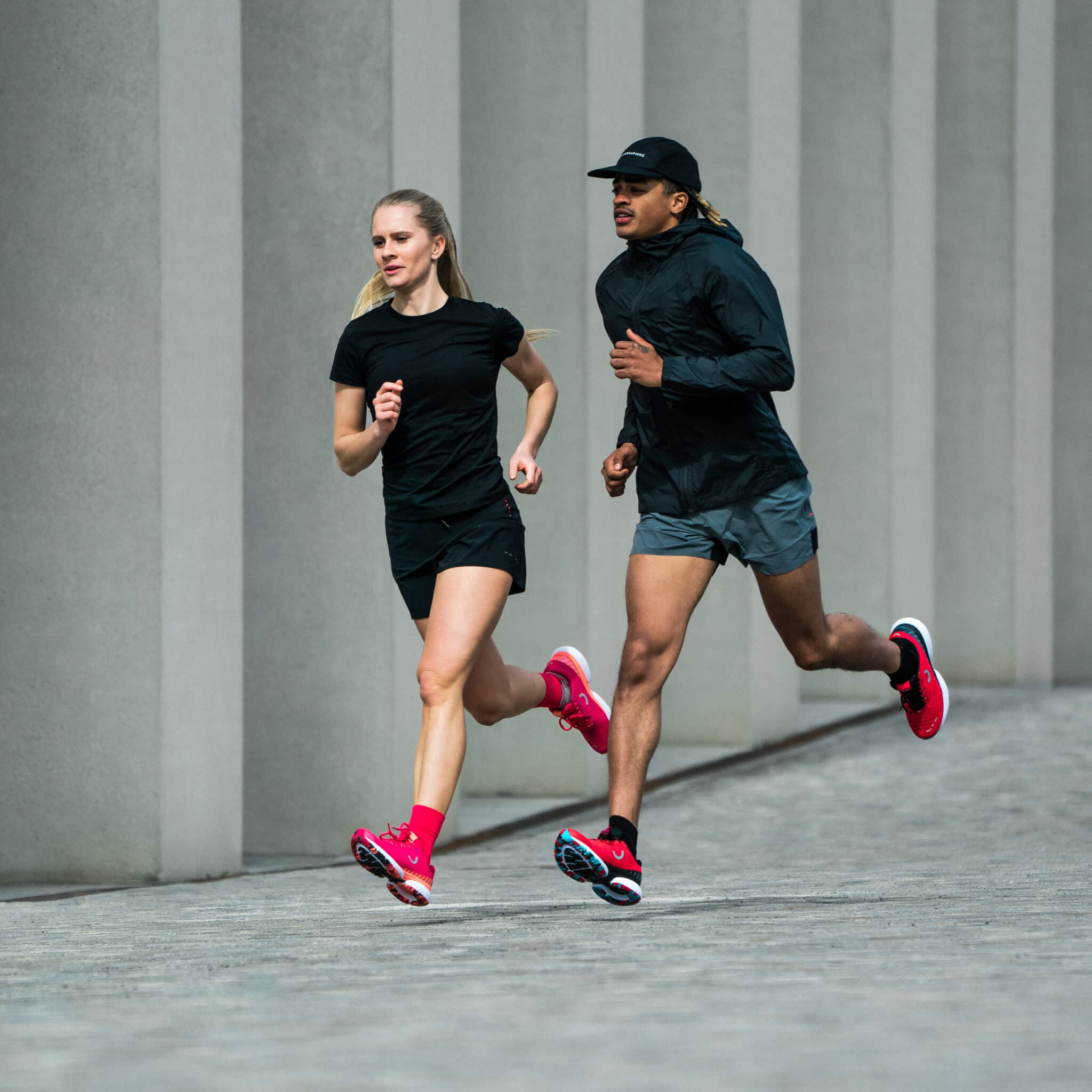
NEVER RUN OUT OF
NEWS
Discover all True Motion stories – and be the first to hear about new products, promotions and events. Simply, center your run!
READ THE NEWEST
U-RUN STORIES
Run Local, Buy Local: Frankfurter Laufshop
2024-04-10

“To make running really fun and avoid injury, we need a running shoe that fits us and meets our individual needs," says Jost Wiebelhaus, owner of Frankfurter Laufshop.
Run Local, Buy Local: Bunert - Der Kölner Laufladen
2024-04-10
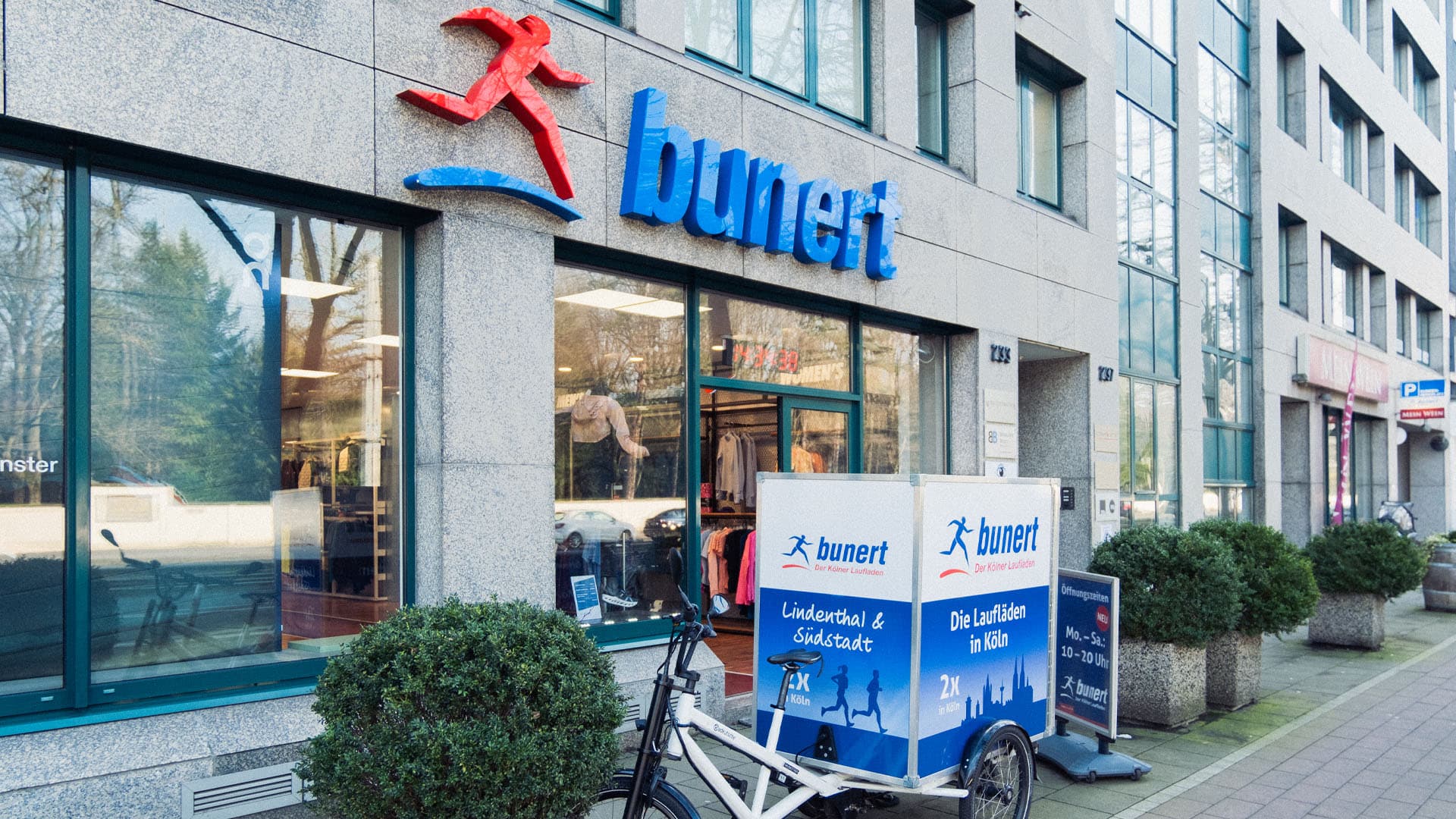
“Our aim is to have the right running shoe for every runner on site – to achieve this, we rely on a well-stocked warehouse,” says Martin Lüchtefeld, owner of Bunert – Der Kölner Laufladen.
READ THE NEWEST
U-RUN STORIES
Run Local, Buy Local: Frankfurter Laufshop
2024-04-10

“To make running really fun and avoid injury, we need a running shoe that fits us and meets our individual needs," says Jost Wiebelhaus, owner of Frankfurter Laufshop.
Run Local, Buy Local: Bunert - Der Kölner Laufladen
2024-04-10

“Our aim is to have the right running shoe for every runner on site – to achieve this, we rely on a well-stocked warehouse,” says Martin Lüchtefeld, owner of Bunert – Der Kölner Laufladen.
RECOMMENDED BY








RECOMMENDED BY








NEVER RUN OUT OF NEWS
Discover all True Motion stories – and be the first to hear about new products, promotions and events. Simply, center your run!
SERVICE
ABOUT US
© 2023 True Motion Running GmbH

